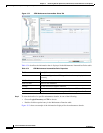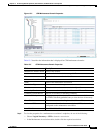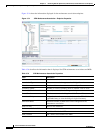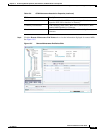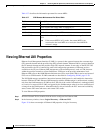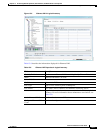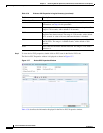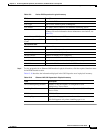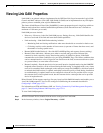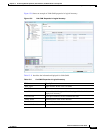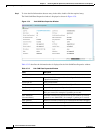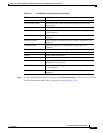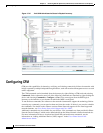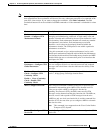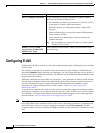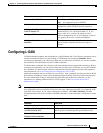
15-14
Cisco Prime Network 4.0 User Guide
OL-29343-01
Chapter 15 Monitoring Ethernet Operations, Administration, and Maintenance Tool Properties
Viewing Link OAM Properties
Viewing Link OAM Properties
Link OAM is an optional sublayer implemented in the OSI Data Link Layer between the Logical Link
Control and MAC sublayers. Link (802.3AH) OAM (L-OAM) can be implemented on any full-duplex
point-to-point or emulated point-to-point Ethernet link.
The frames (OAM Protocol Data Units [OAMPDUs]) cannot propagate beyond a single hop within an
Ethernet network and have modest bandwidth requirements (frame transmission rate is limited to a
maximum of 10 frames per second).
Link OAM processes include:
• Discovery—Discovery is the first Link OAM process. During discovery, Link OAM identifies the
devices at each end of the link and learns their OAM capabilities.
• Link monitoring—Link OAM link monitoring includes:
–
Monitoring links and issuing notifications when error thresholds are exceeded or faults occur.
–
Collecting statistics on the number of frame errors (or percent of frames that have errors) and
the number of coding symbol errors.
• Remote MIB Variable Retrieval—Provides 802.3ah MIB polling and response (but not writing).
• Remote Failure indication—Informs peers when a received path goes down. Because link
connectivity faults caused by slowly deteriorating quality are difficult to detect, Link OAM
communicates such failure conditions to its peer using OAMPDU flags. The failure conditions that
can be communicated are a loss of signal in one direction on the link, an unrecoverable error (such
as a power failure), or some other critical event.
• Remote Loopback—Puts the peer device in (near-end) intrusive loopback mode using the OAMPDU
loopback control. Statistics can be collected during the link testing. In loopback mode, every frame
received is transmitted back unchanged on the same port (except for OAMPDUs, which are needed
to maintain the OAM session). Loopback mode helps ensure the quality of links during installation
or troubleshooting. Loopback mode can be configured so that the service provider device can put
the customer device into loopback mode, but the customer device cannot put the service provider
device in loopback mode.
Prime Network Vision supports topology discovery based on Link OAM information and enables you to
view Link OAM properties. You can also configure L-OAM using the commands described in
Configuring L-OAM, page 15-21.
For information on CFM and Ethernet LMI, see Viewing Connectivity Fault Management Properties,
page 15-3 and Viewing Ethernet LMI Properties, page 15-10.
To view Link OAM properties:
Step 1 In Prime Network Vision, double-click the device configured for Link OAM.
Step 2 In the inventory window, choose Logical Inventory > OAM.



